Historia
Antiguas edificaciones (como el castillo) sugieren guerras, asedios y saqueos, inseguridad, defensa y vigilancia. En la edad de hierro hubo ya un asentamiento humano (el primitivo Larraga), pasando más tarde por la época romana, de la que quedan restos de una calzada con un puente y en la edad media un castillo protector y vigía sobre la corona de un cerro por cuya vertiente oeste y suroeste se desparramó la villa, en los orígenes del Reino de Navarra.
Siempre se ha dicho que los primeros orígenes documentados de Larraga provenían de la villa romana Tarraga, citada por Plinio, incluso así aparecen en diversas enciclopedias muy bien consideradas. Sea o no así, lo que sí podemos afirmar es la presencia del Imperio romano aquí, ya que lo atestiguan el puente romano que hay saliendo de la gasolinera en dirección a Estella, a unos 500 metros.
Pero todavía hay más, ya que nos podemos remontar a épocas anteriores; quedan vestigios arqueológicos de asentamientos prehistóricos diseminados a lo largo de todo el término municipal.
Si vamos a la época medieval, resulta indiscutible el hecho de que se cita a esta localidad desde el siglo XI; vestigio suficiente es el Santo Cristo del Socorro, talla románica del siglo XII, que ha llegado hasta nuestros días con un fuerte arraigo.
En 1193, Sancho el Sabio concede a Larraga su fuero privativo que fue aplicado con otras señaladas mercedes en defensa de su castillo fue encomendada al concejo de la villa, señal de gran fidelidad y privilegio preciadísimo. Carlos II la hizo villa realenga. Don Juan de Albret y Catalina de Foix, además de darle su escudo, la hicieron buena villa, con asiento en Cortes.






